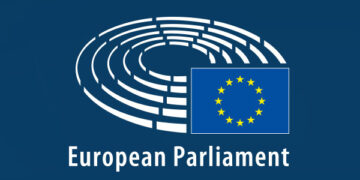CNN
—
The release of two American hostages from Gaza, the first since Hamas launched its brutal attack on Israel, has deepened questions about the fate of roughly 200 other hostages should Israeli troops go into the enclave where humanitarian conditions are growing ever more dire.
Hamas, the Islamist militant group that controls Gaza, handed over the hostages at the border on Friday, with Judith Tai Raanan and her 17-year-old daughter Natalie Raanan now on their way to be reunited with loved ones.
For their family, the release marked the end of a nightmare that began on October 7 when Hamas members carried out the worst massacre of Jews since the Holocaust, killing more than 1,400 people and abducting scores back to Gaza.
So far at least 4,127 people have been killed in Israel’s retaliatory strikes on Gaza, according to the Hamas-controlled Palestinian Ministry of Health in Gaza, including hundreds of women and children – even as Israel claims it is only targeting Hamas locations.
“We are ready to start this incredible journey of healing and trauma relief for her,” said Ben Raanan, Natalie’s brother.
But, he pointed out, the nightmare continues for countless others.
“There are families all over in Gaza and in Israel that are experiencing a loss that I can’t even imagine,” he said.
Many of those Israeli families attended a ceremony in Tel Aviv on Friday, where a Shabbat dinner table was laid with 200 empty place settings to represent the hostages. Shabbat, a holy day of rest and reflection each week, is often a time when Jewish families gather for meals and prayer.
A Hamas spokesperson claimed on Friday that the two US hostages had been released “for humanitarian reasons” and to “prove to the American people and the world” that claims made by the United States government “are false and baseless.”
And while the release has been welcomed by world leaders, including those in the United States, United Kingdom and France, those in Israel have voiced skepticism about Hamas’ motivations and have promised to continue their blistering counterattack.
“Two of our hostages are home. We will not ease the effort to bring back all abductees and those missing. Simultaneously, we keep fighting until a victory is reached,” said Israeli Prime Minister Benjamin Netanyahu in a statement on social media on Friday.
Maj. Doron Spielman, a spokesperson for the Israel Defense Forces (IDF), told CNN on Friday it was an “absurd” attempt by Hamas to “gain more world favor by playing that humanitarian card.”
“I, of course, hope that people are not going to have such a short memory and they’ll know this is one of the largest terror forces in the world. I think it’s very important not to lose sight of that,” he added.
Palestinian prime minister: Blind support of Israel is a license for killing
Others have suggested the release could be an attempt by Hamas to buy time, as speculation swirls of a potential ground incursion by Israeli forces, who have massed by the border and warned Palestinians to evacuate northern Gaza.
Israeli officials have not publicly shared details about their plans, besides saying the goal is to eliminate Hamas and its infrastructure, much of which consists of heavily reinforced tunnels underground the densely populated cities.
“Hamas is really under great pressure, and it is trying every trick in the book, and they will try many more as we go along, to stop the Israeli maneuver into the Gaza Strip,” said Rami Igra, former division chief of the hostages and MIA unit with the Mossad, Israel’s intelligence service.
“They are trying to postpone this. They are trying to ease the pressure on them, and they will use anything they can in order to get a ceasefire,” he added.
The US and its allies have not tried to discourage this kind of ground assault – but they have urged Israel to be strategic and clear about its goals in the case of an incursion, warning against a prolonged occupation and emphasizing civilian safety, US and Western officials told CNN.

Injured Palestinian child describes moment missile landed near him
Yet every day the civilian deaths in Gaza mount, fueling anger in the Middle East and beyond. Gaza is fast running out of food, water, fuel and medical supplies – all while being pounded by relentless airstrikes.
The enclave, which was already under a blockade imposed by Israel and Egypt for the past 17 years, became further isolated after the latest war broke out and Israel declared a complete siege.
The electricity blackout and ban on fuel imports have had “devastating consequences” on the healthcare system and access to clean water, warned the UN’s Office for the Coordination of Humanitarian Affairs (OCHA) on Saturday.
It added that about 1.4 million people had been displaced in Gaza – more than 60% of the entire strip’s population of 2 million.
In pictures: The deadly clashes in Israel and Gaza
More than 544,000 people are staying at UN-designated emergency shelters “in increasingly dire conditions,” with many at risk of infectious disease due to unsafe water, the OCHA added in its statement.
While Egypt agreed earlier this week to let the first aid trucks into Gaza through the Rafah crossing – the only entry point into the enclave not controlled by Israel – the opening has been delayed, frustrating aid organizations waiting to be given the green light.
Humanitarian aid has been piling up on the Egypt side of the border for days, with 219 trucks waiting at the Rafah crossing, according to the UN.
US President Joe Biden, who first announced the aid deal after meeting his Egyptian counterpart, said on Friday that aid trucks should enter Gaza “within the next 24 to 48 hours.” Roads near the crossing that had been damaged by Israeli airstrikes need to be repaved before the crossing could open, he said.
But the 20 trucks that have been approved for the first delivery, while desperately needed, aren’t nearly enough for the scale of the crisis in Gaza.
“We need to build up to the 100 trucks a day that used to be the case of the aid program going into Gaza,” UN relief chief Martin Griffiths told CNN. “We need to be able to have the assurance that we can go in at scale everyday – deliberately, repetitively and reliably.”
Tamara Alrifai, the director of communications at the UN’s relief body for Palestinian refugees, echoed this sentiment, saying: “What is needed is a continuous flow of aid. This is not about a one-off, sending 20 trucks and then nothing.”
This is a breaking news story and will be regularly updated.








































Discussion about this post